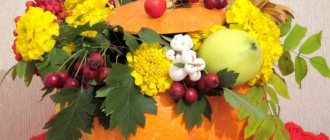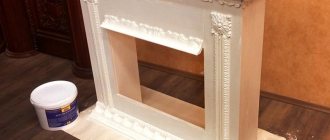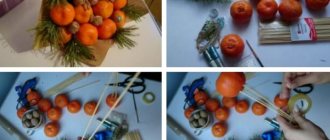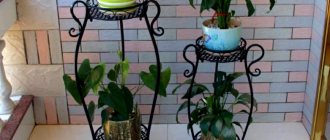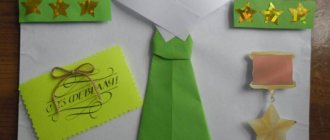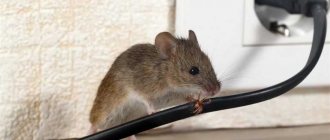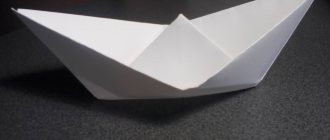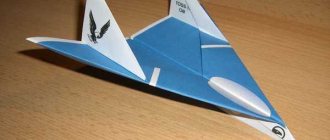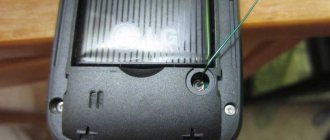If you enjoy making a variety of colorful crafts, this is a great way to work with your child. Children really appreciate attention. The more time you devote to his development, the more gifted he will be. You may also be faced with the need to manufacture for a certain holiday date.
On Cosmonautics Day, school and preschool institutions host handicraft exhibitions, where children show individual products. Check out some of the fun techniques for making a model of a space object.
Work supplies
Space subjects are made from everything that is at hand, that has fallen out of use or is prepared only for the process of needlework for crafts in a child’s home room, kindergarten, or school.
- Several spheres of different sizes.
- Supplies for drawing.
- Illustrations and newspaper strips.
- Wallpaper paste.
- Thin plywood, foam rubber.
- Thread and wire for loops to products.
- CDs.
- Plastic bottles.
- Plastic mass for modeling.
- Food grade aluminum foil and much more.
Layout of dwellings and settlements
Building models of homes or villages develops students' resourcefulness and creative initiative. And such models produced will serve as valuable aids for the geography classroom. Pictures, drawings, etc., as well as descriptions in magazines and books can be used for guidance. As an example, here is a description of one layout.
Creation
When constructing a galaxy system and depicting its realism, it is advisable to study tone and volume. Look:
- The sun is golden.
- Mercury – faded, gloomy.
- Venus is straw-colored with whitish streaks.
- Earth – dark blue with greenish.
- Mars is scarlet.
- Jupiter is red-orange with a whitish admixture.
- Saturn is bright yellow.
- Uranus is blue.
- Neptune is turquoise.
- Pluto is beige.
Snow layout
The snow surface is made like this: the desired part is smeared with glue and sprinkled with brown powder mixed with boric acid to add shine. You can also make the surface of cotton wool (absorbent), which is spread in an even and thin layer on top of white paper. The cotton wool is sprinkled with boric acid on top. When the glued parts are dry, they are covered with putty made from chalk (tooth powder) and glue. Depending on the color that the soil should have, different paints are added to the chalk. The putty is applied in a thin layer, and in those places where it is required, it takes the shape of the necessary convexities, relief, protrusions, banks, etc.
The purpose of coating with putty is to hold the model together, smooth out or create unevenness, and make it dense and monolithic. When applying it, the putty can contain pebbles and roots that imitate one or another object.
The background of the layout can be painted with brown paint or sprinkled with wood powder over glue, or covered with dark paper. After finishing, the entire model, while it is raw, is sprinkled with diamond mounds, which makes it come to life, especially in the evening light.
The inscriptions are made on drawing paper in ink and placed under glass, like labels, and the layout is ready. Let's turn to making some details of the layouts.
From threads
This is the most common option for making a planet. To work you will need the basic components. The next steps are simple:
- Inflate the balloon.
- Fire a soap bubble of glue with a needle and pull the thread through. It will be saturated with glue.
- Take it by the edge and begin to wind it around the ball in a chaotic manner, forming a fairly dense mesh.
- Set the future planet aside until the glue has completely dried.
- As soon as this happens, heat the ball and remove it from the workpiece.
- Study the World map or globe, and color all the continents on the ball in the appropriate colors.
Then build a pedestal and secure the craft. If the coloring option does not suit you, all the sushi areas can be made of felt and glued to the surface of the ball, and you need to paint the craft itself blue.
History in miniature
In their works, modelers sometimes turn to mountain themes. And here, in addition to the usual work of gluing and painting the figures, two main problems await them: 1. Believably show the actions of people in the mountains. 2. Production of imitation mountain terrain.
In principle, considering that most have never been to the mountains, and even more so, have never climbed rocks with a backpack, you don’t have to worry too much about these points. Practice shows that almost any quality of performance of a “mountain” composition will still be received with a bang by the audience. But for those masochistic modelers who are interested in making not a stand with beautiful toy soldiers, but trying to show a piece of real life, this is not enough. And it is for them that the material below is intended.
Let me clarify right away that I will not discuss the first point here. Let's move on to making mountainous terrain, and more specifically, rocks.
Today, the most popular way to create a miniature mountain setting is to pour plaster/alabaster into crumpled foil. There is another option to sculpt the stones yourself. But, as practice shows, nothing good comes of this. At best, modelers come up with some round river bulges. But certainly not rock fragments. So let's move on to the foil right away. Yes, indeed, in this way you can get a relief and texture that is closest to reality, but...Only at first glance! In fact, plaster frozen in crumpled foil is similar, first of all (and secondly, by the way, too) to plaster frozen in foil. It resembles mountains only on a very small scale. Let's just say that it looks quite similar to a mountain range at 1:1000. But not at 1:35.
Papier mache
The French technique of making copies of objects has found its niche in needlework. Take:
- Balloon.
- Old newspapers, any other thin paper.
- Paste.
- Drawing set.
Instructions:
- Cook the paste. The recipe can be easily found on the Internet.
- Tear newspaper sheets into small pieces of paper in large quantities.
- Dip individual pieces of newspaper into glue and glue them layered onto the ball.
- Let dry. Air drying will take a lot of time. It is allowed to use the oven at low heat.
- When gluing, uneven surfaces will form, do not try to smooth them out. They will form excellent three-dimensional elements of the planet’s exterior.
- Pierce the inside of the ball with a point and use the gap made to remove the remainder.
Next, cut the pages into small squares. Stack them to form craters. Carefully glue the edges of the funnel to the lunar surface. Dry again. If you make a buttonhole from wire, you will get a hanging Moon.
Preparing for painting
The next stage is one of the most important. Painting the finished relief largely determines the realism of the entire layout. You should know well what kind of area you are depicting, what kind of flora there is. Season.
And again, it is advisable to have a lot of photos. If the area is close to you, it is easy to take as many photos as possible, especially details. A protruding tree root in the middle of the path, a loose stone, a dried tree. These details will help you give everything a special realism.
The painting stage itself is too voluminous and is no longer included in the scope of this article. Just be more attentive in nature, on the street, notice everything that surrounds you. There are no uniform methods for creating a landscape. We looked at one of perhaps the simplest and cheapest methods of creating nature on a shelf.
The article was prepared by educational teacher Valery Smirnov.
To color sawdust, ultramarine blue is taken, diluted in hot water, into which wood powder is immersed, which is colored before your eyes to the desired color. Once removed from the paint, it is wrung out and placed in a thin layer on a baking sheet to dry.
Wood powder can be used to cover models instead of paint, but for this it is prepared in a wide variety of colors, dried and placed in jars. The best dye for this is aniline, sold in sachets for dyeing cotton fabrics. The powder is applied in a thin layer to hot wood glue and pressed down. When it dries, the excess is poured into a jar and stored for future work.
The snow surface is made like this: the desired part is smeared with glue and sprinkled with brown powder mixed with boric acid to add shine. You can also make the surface of cotton wool (absorbent), which is spread in an even and thin layer on top of white paper. The cotton wool is sprinkled with boric acid on top. When the glued parts are dry, they are covered with putty made from chalk (tooth powder) and glue. Depending on the color that the soil should have, different paints are added to the chalk. The putty is applied in a thin layer, and in those places where it is required, it takes the shape of the necessary convexities, relief, protrusions, banks, etc.
The purpose of coating with putty is to hold the model together, smooth out or create unevenness, and make it dense and monolithic. When applying it, the putty can contain pebbles and roots that imitate one or another object.
The background of the layout can be painted with brown paint or sprinkled with wood powder over glue, or covered with dark paper. After finishing, the entire model, while it is raw, is sprinkled with diamond mounds, which makes it come to life, especially in the evening light.
The inscriptions are made on drawing paper in ink and placed under glass, like labels, and the layout is ready. Let's turn to making some details of the layouts.
The forest and bushes conventionally represent green deciduous mosses. They gather in advance. You need to choose the greenest, brightest and not very juicy ones, dry them in a draft, but not in the sun. Very dense bouquets are tied from mosses, which are inserted into holes made in the model with an awl.
Made from plasticine
The plastic material is ideal for making crafts for preschoolers. In the process of sculpting, the mobility of the fingers is developed, and the imagination deepens the spiritual perception of the world. You will need:
- Plasticine.
- A base, such as a disposable cup.
- Paints and brushes.
Memo
- Take the base and paint it a dark bluish shade. It is possible to use any color that your imagination allows.
- Draw stars along the edge of the dish and place the main planets and asteroids.
Feel free to experiment when depicting a galaxy. It is not at all necessary to sculpt the Moon, Jupiter or Pluto exactly.
For example, make a ball out of dark green plasticine. Craters on the Moon will be blue spots. Attach them to a model of a cosmic body. Place the model itself on the base.
Applying a Layout
And if you make a cutaway model of a volcano with your own hands, it will be indispensable for schoolchildren. To do this, you need to sculpt not a whole mountain, but only half of it. When you paint the model, draw on it the vent, the lava rising through it and the magma located at the foot of the volcano. Another way to make students happy is to conduct experiments with a model of a volcano. For the best effect and a large amount of foam, you need to add a couple of drops of dishwashing detergent to the soda and pour it all with vinegar. Remember that the scale of the reaction directly depends on the amount of substances, so when conducting experiments indoors, use small proportions.
Also, never close the bottle during the reaction, as it may explode!
How else to make a base for a globe
- Simply crumple up the newspapers and wrap the paper in several layers until you have something that looks like a ball. The method is simple and fast, but not neat.
- Buy a ready-made foam blank.
- Use Christmas balls if you want to make a small globe.
Take a volleyball, football, gymnastics or other ball of suitable diameter as a basis. You can immediately draw or stick continents on them. You can also use them as a form for papier-mâché. Only the paper blank will have to be cut to remove the ball. But you can attach loops to the halves and turn the model of the planet into a box.
Now you know how to make a globe with your own hands from paper. Try making it with your children, they will definitely enjoy this exciting process.
Maybe you love Space and want to have your own solar system? Or are you a parent who has children and they have been given a creative assignment for school? Whoever you are, if you have a desire to create a model of a three-dimensional and very similar solar system, read our article on DIY work.
The space theme is very attractive for children and adults. After all, she is so mysterious and enigmatic. With the help of a large and voluminous model of our solar system created by yourself, you can tell children about the structure of the Universe, show space objects and planets.
Of course, before you start working on a model of the Solar System, it will not be superfluous to remember all the details of its structure. Read astronomical literature and remember the main principle of the structure of the Universe: the Sun is in the center, and all the other planets revolve around it.
Types of cards
There are different types of maps and globes.
The physical map contains a schematic image corresponding to the relief features of the planet. The waters of the world's oceans are shown using blue or cyan colors. Plains that are approximately at water level are indicated in green. Deserts and the surface of the earth above sea level correspond to a yellow tint. The mainland of Antarctica, glaciers and large islands at the poles, such as Greenland, are marked in white. And the mountain ranges are brown. The peculiarities of a physical map are that the shades help determine the nature of the relief of a particular area. Another common type is the political map. It can be used to determine the location and boundaries of various states. If the goal was to create a model of a globe with a political map, more shades of plasticine will be needed. In addition, this work is more painstaking, since it requires precision and accuracy when drawing images of different countries.
Method for making Mars
This model can not only decorate any room, but also take its place of honor at an exhibition at school. Although making Mars is quite simple, one way or another, production has certain nuances. Only if you strictly follow all the rules will you be able to make such an original design.
Materials for making: globe, PVA glue, paper, putty, brushes, acrylic paints, clear varnish.
Manufacturing instructions:
Making a model of the solar system is quite an educational and exciting process. There are many options for these crafts, but you don’t need to immediately choose the simplest ones. Because if you spend a little more time creating a product, the result will be better. And the pleasure directly from work will be much greater.
An endless universe of crafts
So how can you make a solar system model for kids at minimal cost? There are several ways.
The most primitive model of the solar system can be made from plasticine or salt dough, painted in the desired colors. It is suitable for the smallest babies.
This model will give the child an idea that all planets revolve around the sun and their number.
- let's blind the orange sun;
- brown-orange Mercury;
- in the same color we sculpt Venus;
- the Earth will be blue and green;
- black-red Mars;
- Jupiter will be brown;
- Saturn is blinded with rings;
- Uranium will be made of blue + gray mass;
- We make Neptune out of blue;
- gray Pluto.
We string all the “planets” onto wooden skewers and attach them to the “Sun”. For greater clarity, skewers can be made of different lengths. Ready.
A plasticine model can be made on a plane:
As a gift for a little schoolchild, you can make a model of the solar system from papier-mâché.
Papier-mâché (translated from French as “chewed paper”) is a plastic mass made from paper with the addition of binders and adhesives (starch, gypsum, glue).
A paper layout is the simplest and most affordable to make. A detailed master class with photos will help you make it.
Materials for work:
- newspaper;
- gray toilet paper;
- office glue;
- plywood sheet;
- colored gouache paints;
- quick-drying blue paint;
- some silver beads.
Make a ball of newspaper soaked in water.
We wrap it with toilet paper and roll this lump into a bun. Lubricate the paper bun with glue, spreading it evenly over the surface.
Leave the balls to dry at room temperature or on a radiator.
While the parts are drying, let’s prepare the basis of the layout: we cut out a circle of the required size from plywood, taking into account the size of the prepared planets. We paint it with blue paint.
We make scatterings of stars from silver-colored beads, evenly distributing them on a circle, according to the picture of the starry sky.
We paint the dried koloboks, imitating the color of the planets.
We will make the rings of Saturn from silver paper.
It is imperative to accurately position the planets in relation to the Sun.
We screw screws into the bottom of the plywood, according to the location of the planets.
We screw our “planets” on top of them.
Our model of the solar system is ready.
During the manufacturing process, you can tell your child about the structure of the solar system, about the planets and everything that will be interesting to him. And such a gift will take on special meaning for him.
A wonderful idea to create a model of the solar system as an element of the interior of a children's room.
First, we decorate part of the ceiling as a starry sky.
We make planets from papier-mâché as described above.
We paint them with acrylic paints. It is more effective to use glossy ones.
We pay a little more attention to the sun. We color and make rays from a strip of faux fur.
We attach a fishing line to the “planets” and secure them with paper clips or a stapler to the ceiling, observing the order of their location from the “Sun”.
